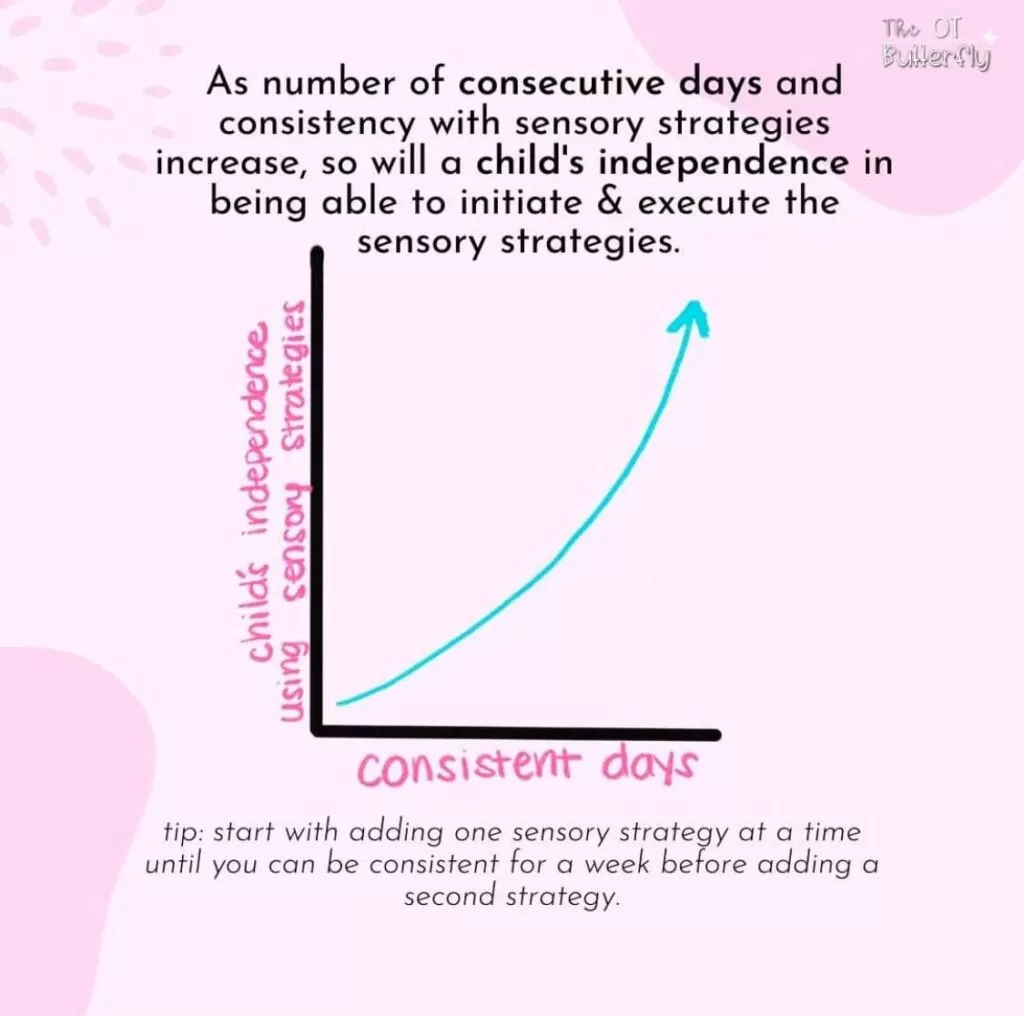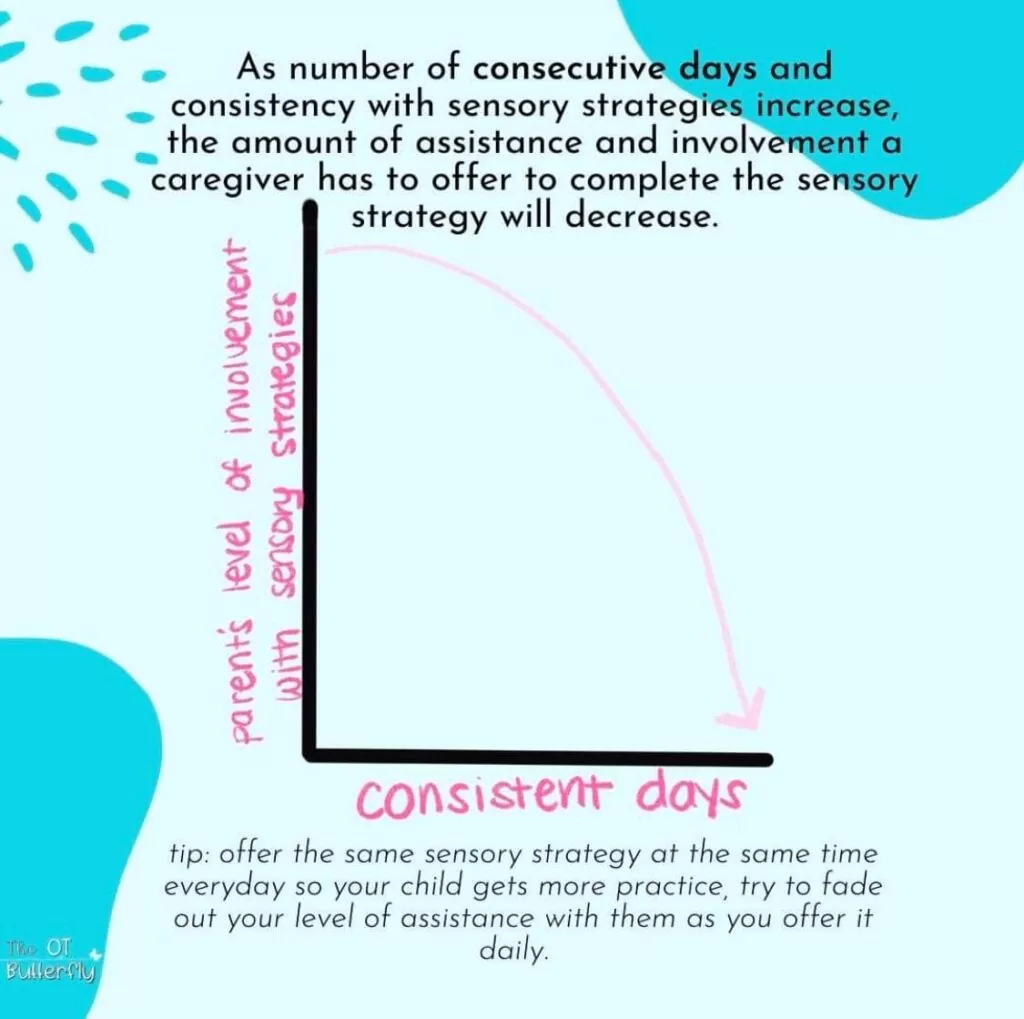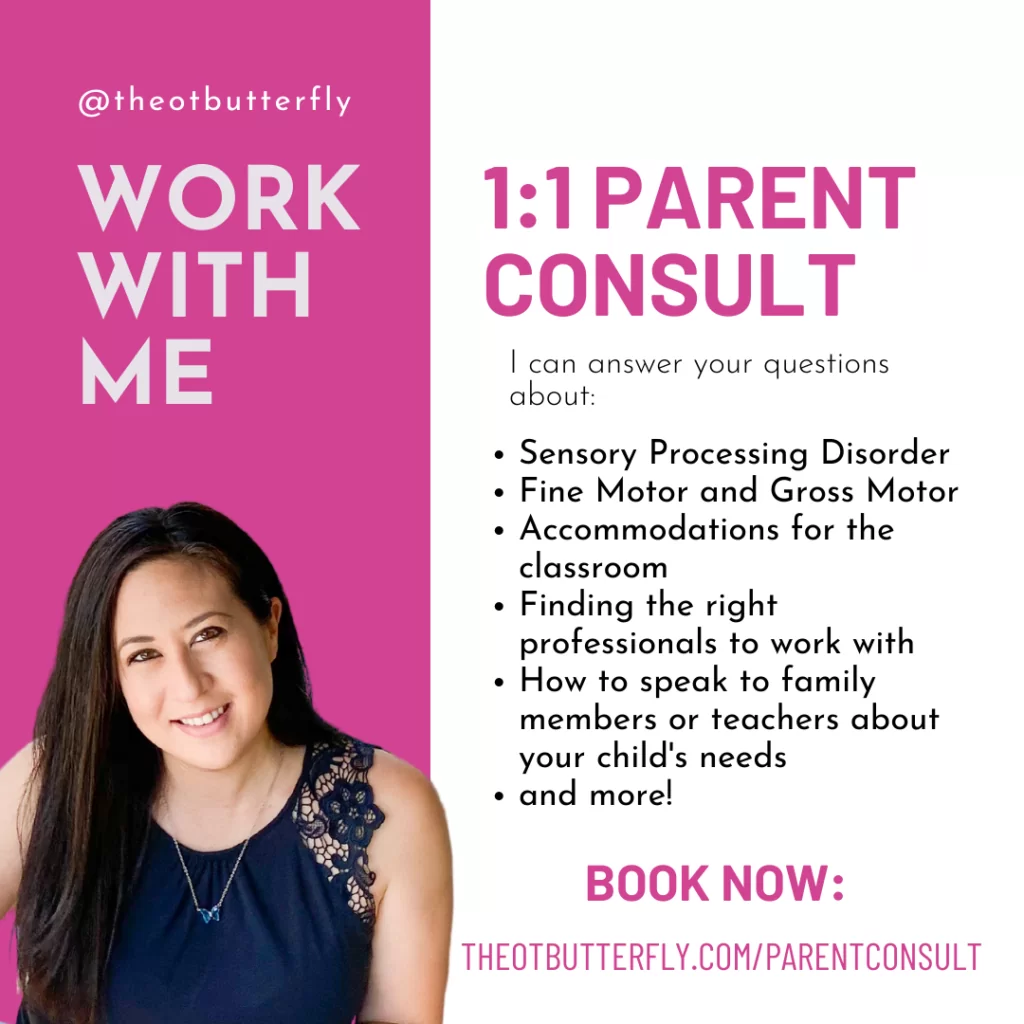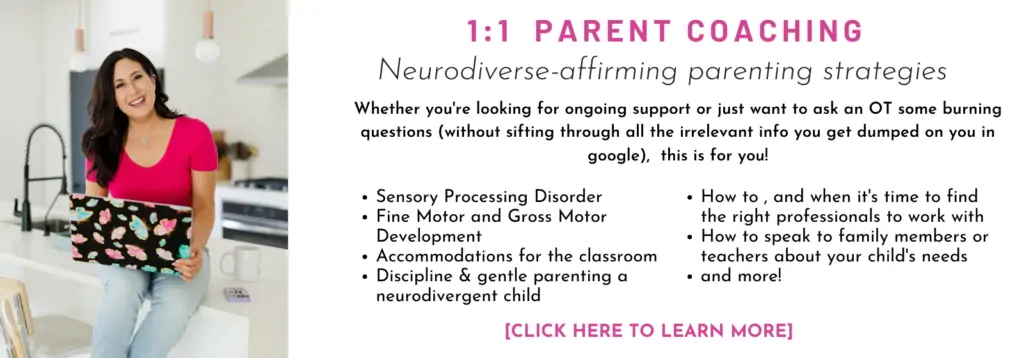Get your FREE sensory profiles cheat sheet >>click here<<
Consistency with home sensory strategies
I asked parents what’s the hardest thing about implementing a sensory diet at home and the number 1 answer was, “consistency”. As a self-proclaimed (and proud, not ashamed) lazy mom, I get this 100%.
Even as an educated occupational therapist who “knows exactly what to do”, I don’t do it all the time.
I can’t stick to a diet.
I can’t stick to an exercise schedule, I can’t even remember to drink water the first thing in the morning like I pledged I would the past 3 years.
At the risk of sounding hypocritical, I want to share with you the importance of being consistent with home sensory strategies and what a game changer it can be for your child and your family. As the saying goes, “Do as I say, not as I do”.
Consistency is extra important when it comes to developing sensory strategies with your little one. It allows them to build good habits and incorporate them into their daily routines!
In case you wanted a reminder of the importance of being consistent with sensory strategies, and what it could look like at the end of the tunnel… here goes:

What are The Benefits of Consistent Sensory Strategies
When you are consistent in offering sensory strategies daily:
- Your child will be more regulated. – Having a set routine and consistent plans allows your child to learn the skills of self-regulation at their own pace.
- Your child is more likely to become independent in initiating and implementing those strategies. – Once your kiddo starts to get used to the routines you introduce, they may start asking for them or even doing them on their own!
As your child becomes more independent in using the strategies, you won’t need to spend as much time reminding them to do it, setting it up, or helping them do it. It starts becoming automatic. – As they do the strategies more and more, it will become an ingrained habit that they can use even without too much preparation. This helps both your child and you as a parent!

How To Be Successful Using Home Sensory Strategies
Here’s my biggest tip for you: start small. Start with ONE sensory strategy, like blowing bubbles or doing crab walks every day, and see if you can implement it at the same time, every day for a week. Make sure this is a strategy that is doable for both you and your child, and you’ll slowly start seeing the results of your consistency.
Looking for ideas to implement some heavy work into your daily routine? Click here.


Looking for more guidance on how you can support your child’s sensory needs? Let’s work together. I specialize in helping parents understand how sensory impacts behavior and how you can still use gentle parenting techniques for neurodivergent children.






